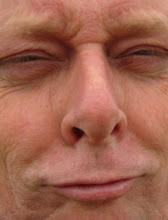What's the dandy's doing nowadays? 2 centuries in the picture, how, why?
Anyone can show dandy-like traits, not everyone can be dandy. The dandy is the leader of "the club" and a club has rules. The rules are set by the members to distinguish them against the "others", the "not dandies".
Those rules can be boring and rigid ...
Rule number one of 'The Manifesto of The Chap' says: THOU SHALT ALWAYS WEAR TWEED. No other fabric says so defiantly: I am a man of panache, savoir-faire and devil-may-care, and I will not be served Continental lager beer under any circumstances.
In short tickling materials and no Heineken.
What makes dandyism so interesting is the believe to live according to an idea, a concept. As in the above example, the material [Tweed] is the message.
Rule number one of 'The Manifesto of The Chap' says: THOU SHALT ALWAYS WEAR TWEED. No other fabric says so defiantly: I am a man of panache, savoir-faire and devil-may-care, and I will not be served Continental lager beer under any circumstances.
In short tickling materials and no Heineken.
What makes dandyism so interesting is the believe to live according to an idea, a concept. As in the above example, the material [Tweed] is the message.
Men with their "lifestyle" convey messages of all time, singers like David Bowie, Boy George, David Sylvian. The multi-talented Dickon Edwards and dandy diarist Sebastian Horsley.
All fed by great nineteenth century examples, Beau Brummell, Oscar Wilde?
Or closer by in time, Louis Couperus, Gabrielle d'Annunzio, Rudolph Valentino and Cecil Beaton?
All fed by great nineteenth century examples, Beau Brummell, Oscar Wilde?
Or closer by in time, Louis Couperus, Gabrielle d'Annunzio, Rudolph Valentino and Cecil Beaton?
Also, but not necessarily, there's the deep desire for secession by wanting, 'to hide in the spotlight, coûte que coûte!
The dandy is a person, not a group. Like somewhere in 2002 the metrosexual was invented, with figurehead David Beckham.
Unfortunately without style, nor quirks, well ...
The dandy is a person, not a group. Like somewhere in 2002 the metrosexual was invented, with figurehead David Beckham.
Unfortunately without style, nor quirks, well ...
Listen to genius Wilde: "The dandy is the future".
The dandy is not only well dressed but also a leader in modern society. In itself a work of art: impassive, unapproachable and, if nessesary, inedible. Like Oscar Wilde's dandyism showed at the end of the 19th century in his plays and novels.
According to Alice Ciolini's book, "The New English Dandy", the dandy "again" has a future. It is a search for the successor of the metrosexual and the subsequent übersexual [George Clooney, sic.].
Looking for that new dandy, she distinguishes; the Neo-Modernist, the Terrace Casual, the Celebrity Tailor, the East End Flaneur, the Gentleman and the New Briton. An interesting survey...
Added july 18. 2012 [title links]
The dandy is not only well dressed but also a leader in modern society. In itself a work of art: impassive, unapproachable and, if nessesary, inedible. Like Oscar Wilde's dandyism showed at the end of the 19th century in his plays and novels.
According to Alice Ciolini's book, "The New English Dandy", the dandy "again" has a future. It is a search for the successor of the metrosexual and the subsequent übersexual [George Clooney, sic.].
Looking for that new dandy, she distinguishes; the Neo-Modernist, the Terrace Casual, the Celebrity Tailor, the East End Flaneur, the Gentleman and the New Briton. An interesting survey...
Added july 18. 2012 [title links]
Introduction: The Literary Dandy (A Special Issue)
Posted on 11 July 2012
When was man first freed from the drudgery of earning his income? And who was the first to dedicate himself to the art of living well? At what point in history did an entire leisure class of hedonistic egoists first appear? And what is dandyism after all? It is merely an excessive delight in clothes and fashionable living?
There is a long and colorful history of dandyism. Such men have always appeared, it seems, during eras of luxury and excess, whether during the Days of the Caesars, or the Age of the Virgin Queen. They have gone by many names. During the Restoration of King Charles the Second, they were “bucks” or “beaus” or “exquisites” or, more meanly, “fops.” During the Regency, they were “rakes” and “blades.” Throughout La Belle Epoque, they were “aesthetes” and “dandies.” This last name has become their common name—and a term used as both description and reproach.
The dandy has always inspired mixed feelings among his fellow citizens. According to Baudelaire, the dandy has a “burning need to create for himself a personal originality.” Such characters incite envy or contempt among their fellow man: it is a “burning desire” which strikes others as too ambitious or arrogant. The dandy has always been unmoved by such resentment; the pursuit of “idle perfection” is not done for applause. As Robert de Montesquiou once said (and his indifference to criticism could be called archetypal): “It is better to be hated than to be unknown.”
We will not concern ourselves with dandies who wrote little of consequence –great though they were in their manner of life – such as Alcibiades or Beau Brummell. It is too much off the point to entertain the anecdotes that surround such figures, not to mention their peers such as the Duke of Buckingham, or Ludwig the Second (the Swan King of Bavaria), or the Counts Boni de Castellane or d’Orsay. Examples are too abundant. As one author reminds us:























